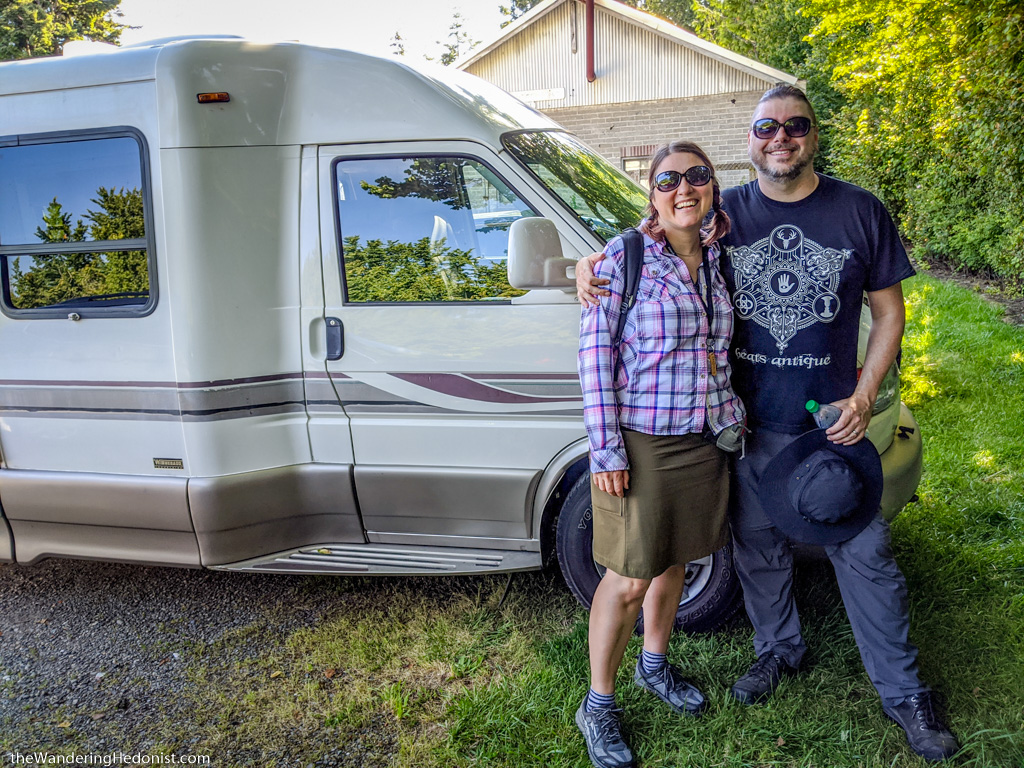
We finally have a little home again. A little pirate ship to sail out into the world in a socially distant kind of a way. It’s been a difficult process to figure out what we wanted to do next but we both agree this is the best alternative given the condition of the world. And worst case scenario, we have a new toy to tool around in.
I’ve personally driven across the country multiple times. When I was young and poor, it was the only travel I had access to. Living in a car and navigating with a paper atlas. Choosing the day’s destination that same morning. An amazing sense of freedom and a head full of radical ideas.
After all of these years, I’m not sure what I will find. Or if the kooky roadside kitsch will have the same shiny magic that it once had. Or if I’ll ever share beachside campfires with outcast american gypsies again. But I hope, like many experiences in my life, I will be able to let all of that history go and simply experience it all again for the first time. And allow myself to be affected and changed.
Choosing the right rig
There are a lot of choices to consider when shopping for a motorhome. Everyone has a different set of priorities. Ours was maneuverability, affordability, and livability. Originally I was interested in a converted Sprinter van. I liked the driveability and stealth nature of a cargo van. A reliable engine. Lots of clearance. Good gas mileage. But as we investigated our options, most of those vans were either quite expensive or heavily used. We were hoping to spend no more than $30k to stay on budget. But vans from around 2008 were scarce because sales slumped dramatically from the recession of that time. The one’s we were finding were either over 200k miles or in the $60k and above category. And honestly after watching a few #vanlife documentaries I started to get a little turned off to that culture. A groove too easily fallen into. That’s not what I had in mind.
Another possibility was the larger class C motorhomes like a 21′-25′ Thor that are often used by RV rental places. These were smaller than the big Class A’s and provided a luxurious amount of living space and a full bathroom. You see these at Burning Man a lot. And you can find used ones in our price range. Actually the larger the RV the cheaper it seemed. You can easily find one for under $20k. But it was a bit hard to drive, the gas mileage was shit, and they aren’t really designed to last when using them 24/7 on long road trips like we want to do. Plus they’re so big it’s difficult to go many places without a second vehicle.
We decided we really wanted a class B style which is a camper van. Regular Eurovan/Westfalia vans were too small for us for long term living. Sprinters were too expensive. So we settled on three candidates: the PleasureWay, the Roadtrek, and the Rialta.
The Roadtrek is just a large van outfitted with a kitchen and bathroom. We liked them but they were a bit short. I’m 6’2″ and there really wasn’t any place for me to stand up. The PleasureWay was taller and more roomy but I started running into lots of stories online about handling and suspension problems for models in our price range. The Rialta on the other hand was somewhere in between the two in height. 5’8″ in most places but a large skylight over the kitchen area was great for standing and the entrance area was recessed and allowed standing. It felt like a good compromise. And the reliability reports were good.
The Rialta was a motorhome built by Winnebago on top of a Eurovan chassis. Lots of good data on those engines. Some trouble with the transmission overheating but easy to control. Notoriously low load limits after the buildout but we travel light.
Another requirement we had was highly divergent sleep schedules. I’m a night owl and Katy is an early riser. So we needed two separate areas. The bed needed to be in the back with another area in the front with a table to allow comfortable laptop time. Typically this was only available in rigs over 21 feet. But Rialta had a perfect configuration (the 22HD) coming in at 21.6′. A clever compact bathroom design. A full kitchen with oven. Wide enough for me to sleep east/west (Sprinter vans are too narrow for me to sleep east/west). And a nice area in the front with a fold out table, rotating front seats, and a third seat area for extra mealtime or gametime space if the bed was made.
It also gets 18mpg which is a huge bonus.
Buying the Rialta
We decided on a whim to drive to Portland, OR to look at some campers. Most of the small van style campers we found online were in that area. We were staying at a cabin in northern WA so it was a 5 hour drive. We had appointments to see all three styles of campers. But there was a Rialta that was perfect for us listed at $20,900 and under 100k miles on Craigslist, so we squeezed that in too before our appointments. We saw one Sprinter van after the Rialta but we had already made up our minds.
There were some issues with the purchase and titling for sure. Katy wrote a good post on that process here. But eventually we got the plates and everything worked out for the best. In the end we paid $19,500 for a carefully maintained vehicle. We were ecstatic.
Getting it road ready
Neither of us have ever owned an RV before. They can be quite complicated with all the systems of a house overlaid on all the systems of a car. So we both read the manuals, researched online, and did our best to educate ourselves on the perils of RV life before ruining the one we had bought.
We started with the water systems. We flushed the grey and black water tanks at a station then filled the freshwater tank with bleach water, ran all the pipes with water, filled the black and grey water tanks, and let sit. Then we flushed all the tanks again and did it again. We tested the hot water and outside shower. Everything was working great. It took a bit of work to find and understand all the line and purge valves as they were tucked under all of the other systems but we figured it out. Katy also bought some black water additive to maintain the system.
Electricity was next. The Rialta has a shore line that exclusively powers all of the AC plugs and a DC converter for the DC systems while plugged in. The microwave and air conditioner are AC only. There’s no native inverter for the cab batteries. The cab batteries are two 60lb deep cycle batteries that charge from the shore line. These can be used to power the interior lights, the propane heater fan/thermostat, and ventilation fans. We also extended the DC system from the single cigarette style socket near the front table with an extension cord and splitter to provide DC power to the back for both device charging and to power our new DC TV that we bought online.
The final step of the electrical system was the onboard generator. The original Rialta generators were faulty and hard to find parts for so the previous owner had installed a custom built generator from a guy in Louisiana who worked on Rialtas. It had zero hours on it and no manual. So I tracked down the creator and talked with him over email and he sent me all the paperwork. The installation was done remotely and from all the videos I watched online I could see that it wasn’t installed perfectly. That’s something we’ll have to figure out as we go along. We don’t really want to use the generator much but it’s the only way to charge the batteries when you’re off grid or “boondocking”. When we finally get down south we’ll visit the creator and he can take a look. But that’s a ways off from now.
Propane systems were pretty straightforward with an onboard tank. This runs the stove/oven, the cab heater when the engine is off, the hot water heater, and also the refrigerator when the shoreline is not plugged in.
Final project was working the refrigerator. It’s an AC/DC/LP (propane) unit designed to run off AC when at a lot or home, the vehicle battery while driving, and gas when remote. These things are notoriously unreliable because the gas heads get clogged and require repeated maintenance. They also only have a 3 degree left/right variance and 6 degree north/south variance to level. You’re supposed to cool the box down at home before you leave for 24 hours, run off the alternator while driving, then switch to gas if you’re stopping remotely. All three heat the compressor coils to maintain cold. Many people replace these with a modern efficient DC fridge wired to the batteries and a solar array to maintain the charge. But that’s an expensive project for another day. OUR refrigerator worked great. Get’s cold, runs off gas. Either a testament to good care or lack of use. Either way I’ll take it!
We also bought a small device called ScanGauge that plugs into your car’s computer to monitor the transmission fluid temp to avoid that known transmission problem.
And as a precaution we had the engine and mechanical elements checked out by a mechanic and got a clean bill of health.
We’re good to go!!
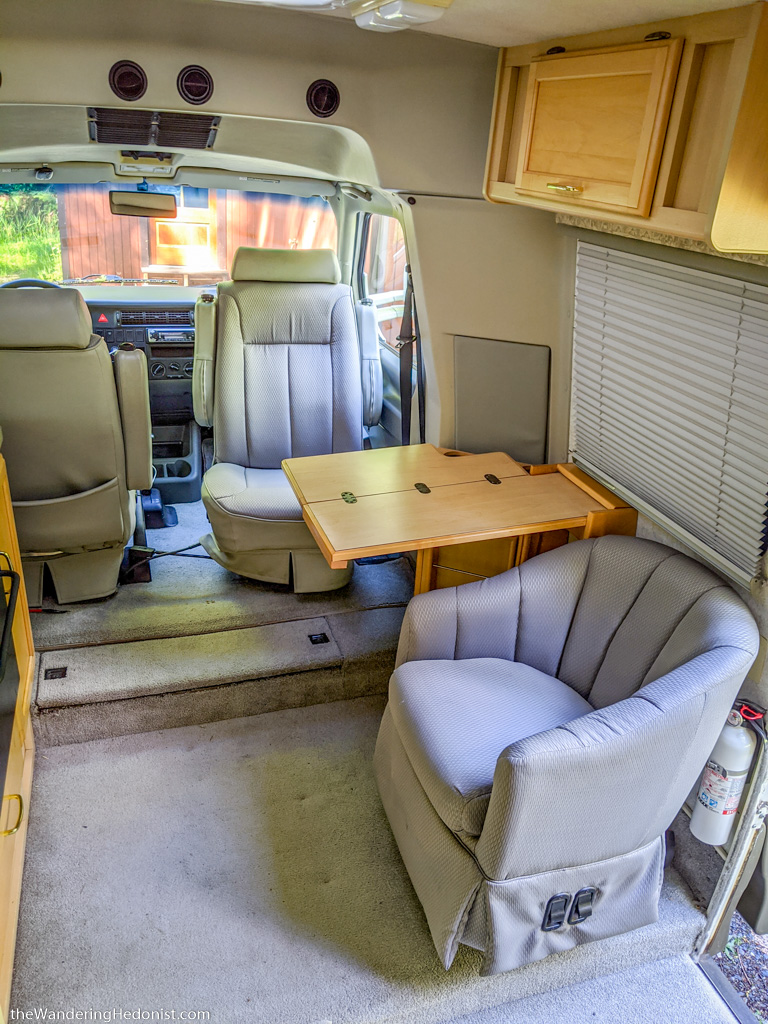
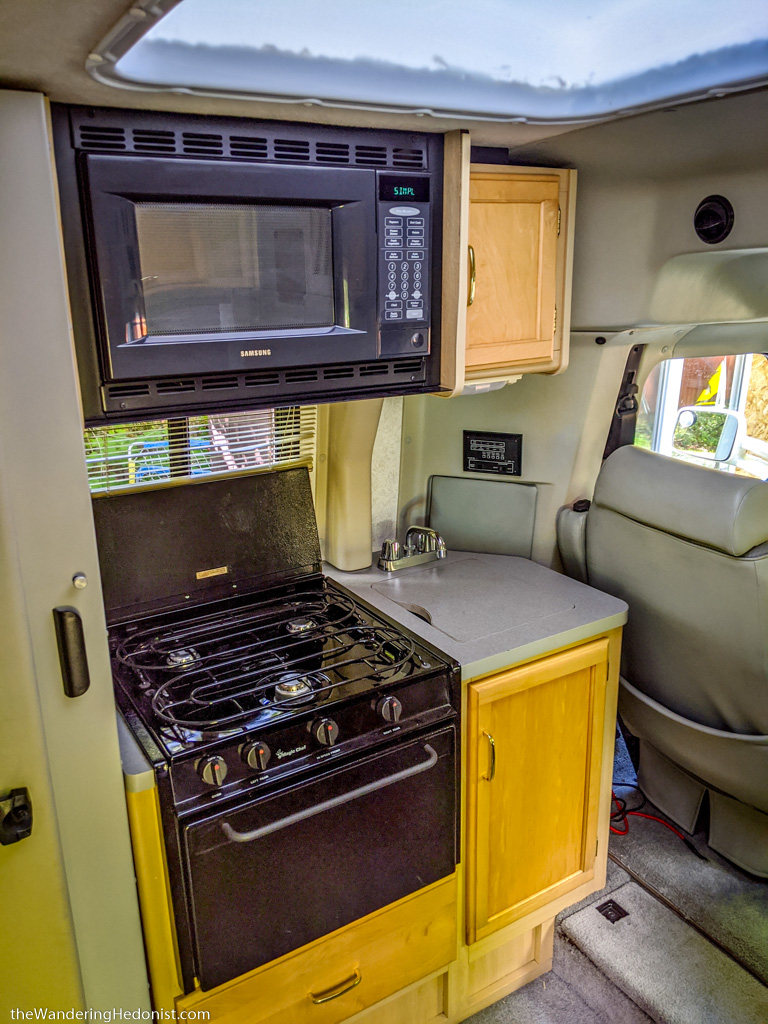
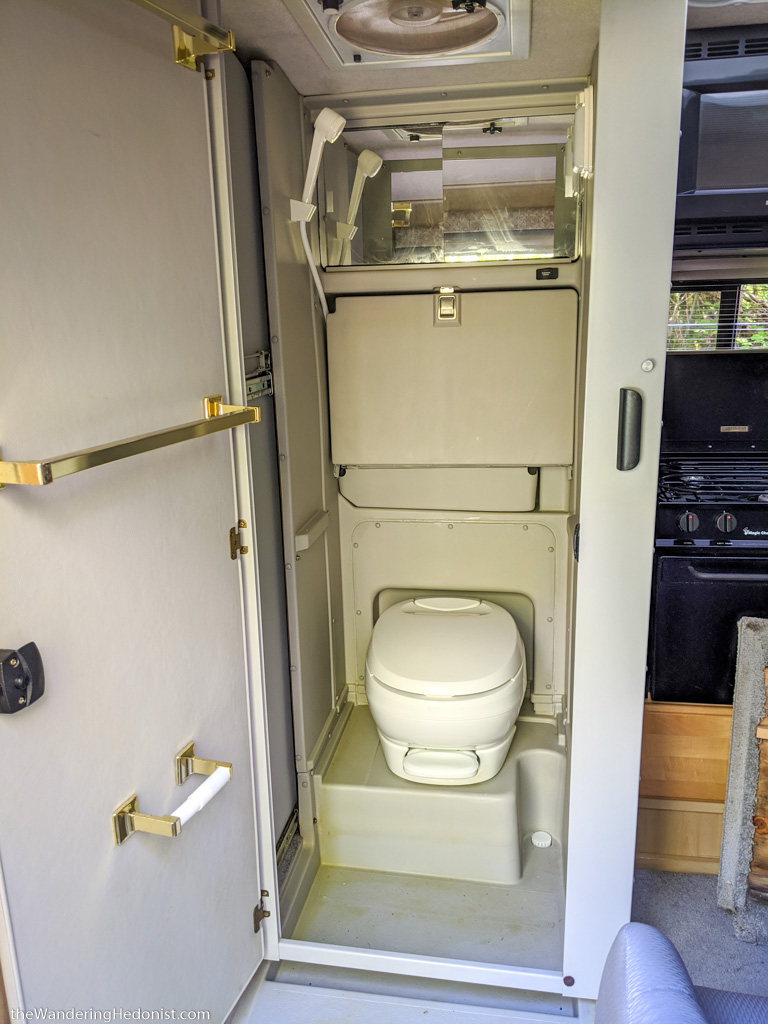
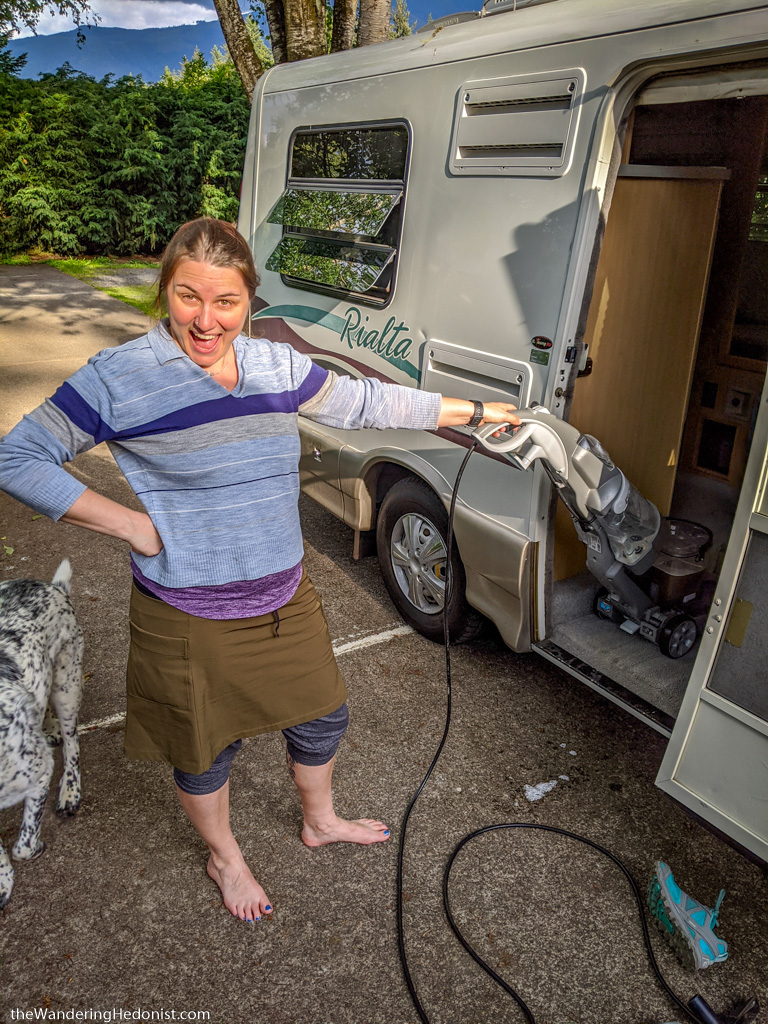
Customizing our space and making it home.
We love the Rialta but Winnebago has an oddly geriatric aesthetic and 2000 had a different set of problems to solve for than we do now. So we spent the last month getting things exactly as we need them to be comfortable.
In addition to space to use laptops we had to solve the problem of being online remotely with them. After some research we bought both a wifi antenna/amplifier (Bearifi) to use available connections and a Verizon cellular hotspot for when that wasn’t an option. This hotspot will connect to cellular and acts like a wifi router for both our laptops. We use GoogleFi on our phones which also allows a personal hotspot so we should have the broadest possible connection options. Many people work remotely in this way but I honestly don’t want to think about that yet.
We also had to buy all the regular things RVs need:
Water pressure regulator, a freshwater hose, 15 to 30 amp connector, 50 to 30 amp connector, front/back levels, under-tire levelers to correct, a ScanGauge to monitor our transmission temp, smoke alarm, USB plugs for the lighter sockets, replaced all the interior bulbs with LED bulbs (both a warm dim type and brighter work type), reflective window covers, DC socket splitter with USB hub and additional USB hub for backwall power.
And then we made a few improvements:
– A curtain rod for the back and curtains that Katy tailored.
– Seat covers for the back dinette.
– A 3″ memory foam topper for the fold down bed and cover that Katy made.
– New sheets, a fun duvet, new pillows, an extra rainbow blanket, bungees to roll it all up.
– We added stackable plastic cabinets to the closet and riser shelves to the front cabinets.
– Organizers for the fridge to keep things from shifting around.
– 4 spice racks by the stove and a new set of spices to fit.
– Carpets for the entire rig with outdoor mats.
– New frypan, pot, and aluminum dutch oven.
– Baking sheet and pan.
– All the basic kitchen essentials like a good knife, wooden spoon, spatulas, etc.
– Replaced the sink cover with a cutting board the same size.
– Lightweight plates, bowls, and cups.
– A 22″ DC television.
– A DC vacuum.
– Cabinet organizers for our clothes.
– New camp chairs, a light camp table, and a screen structure.
– A large fold out rug for outside.
– Microfiber towels.
– Rechargeable sleep machine.
– Indoor/outdoor fun lights.
– A tiny trashcan for the bathroom and trash solution for the kitchen.
Then to round it out we added some games from storage and flexible tool kit based on my Burning Man toolkit. We also replaced all the aging drawer pulls and handles with new ones, painted the bathroom door that had begun to yellow with age to a nice sky blue, and installed a wall shoe organizer to keep our shoes by the front door.
I also bought a light robe anticipating campground showers and some pink flamingo shower shoes.
Not bad for a few weeks of effort.
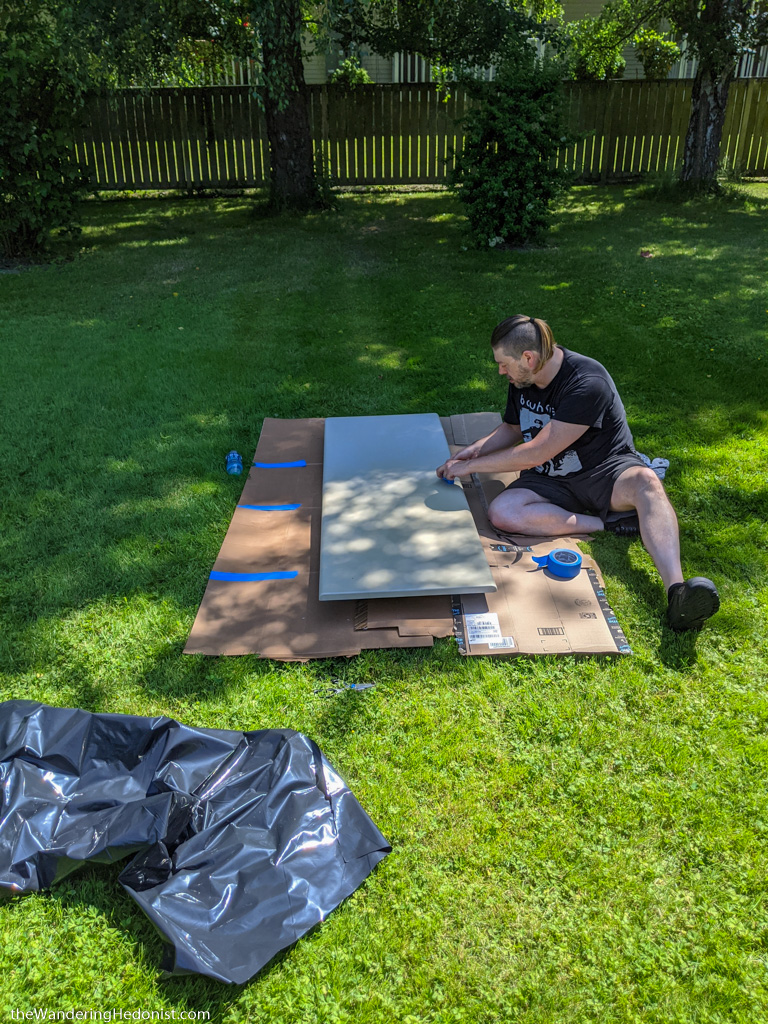

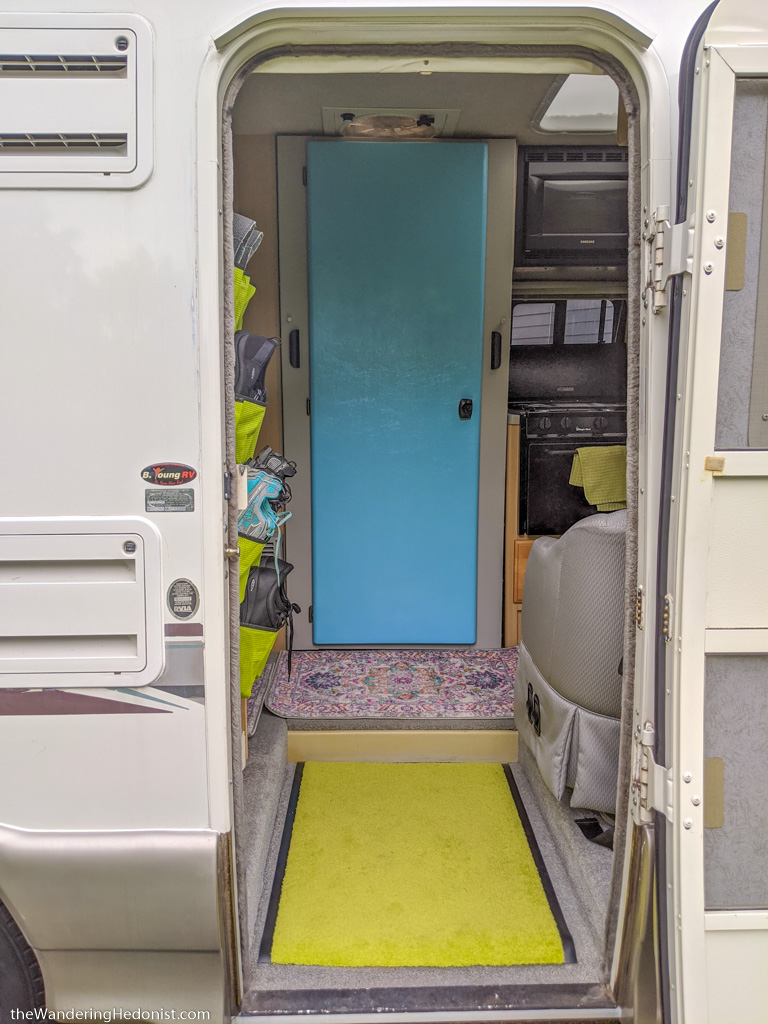
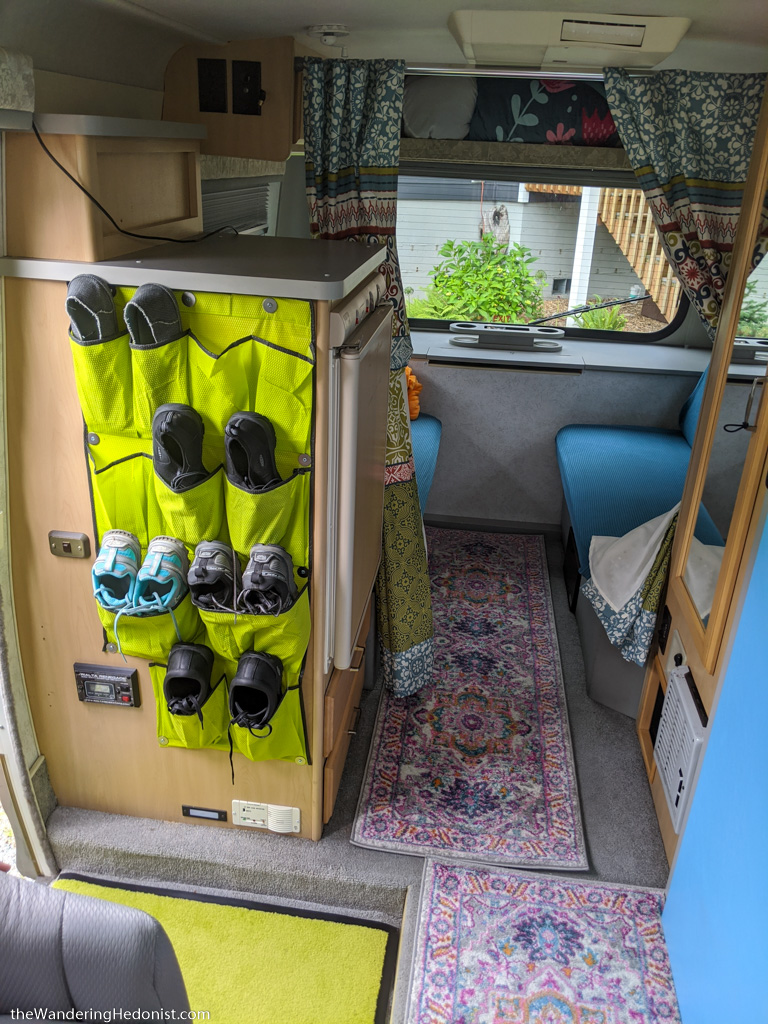
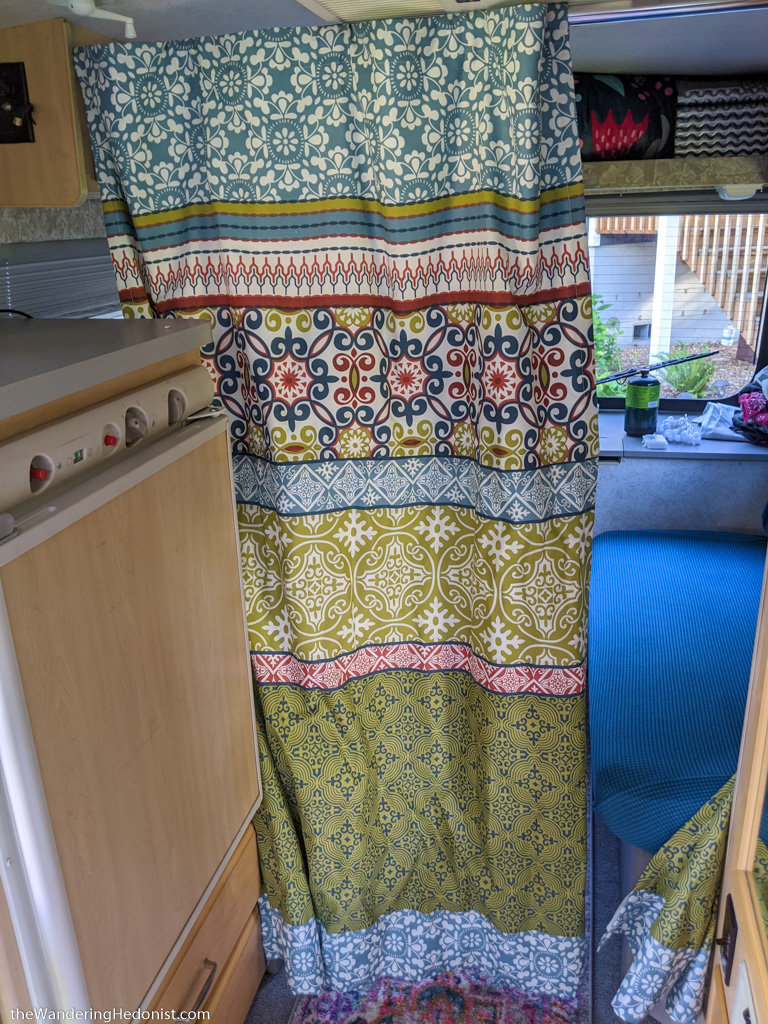
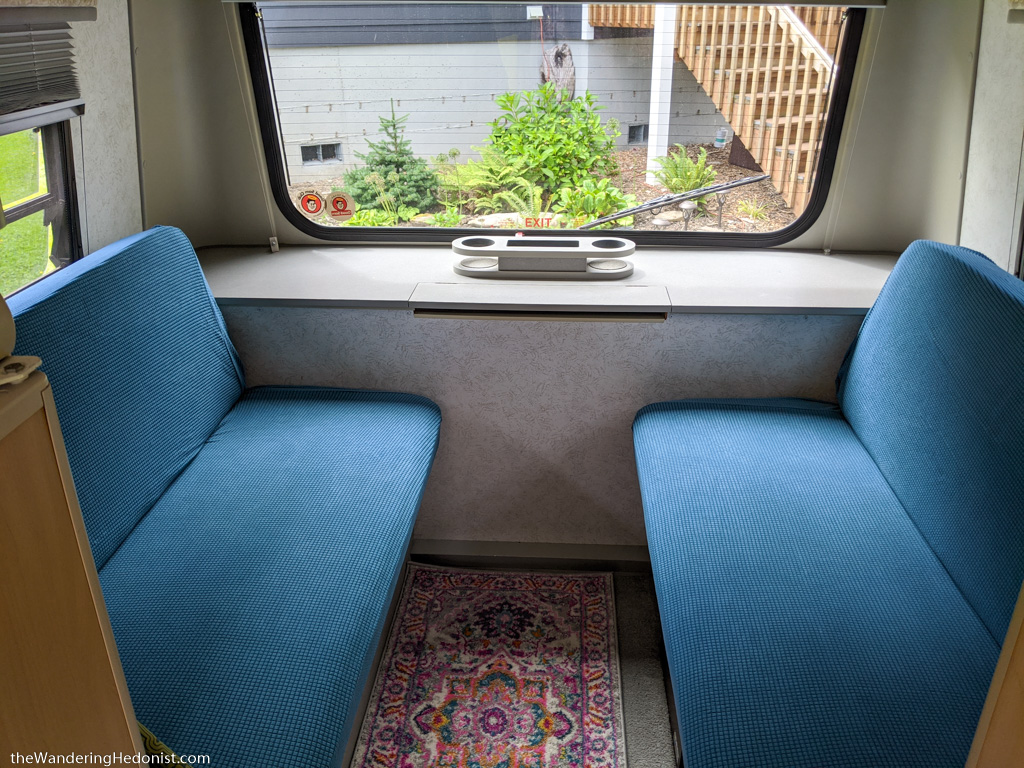
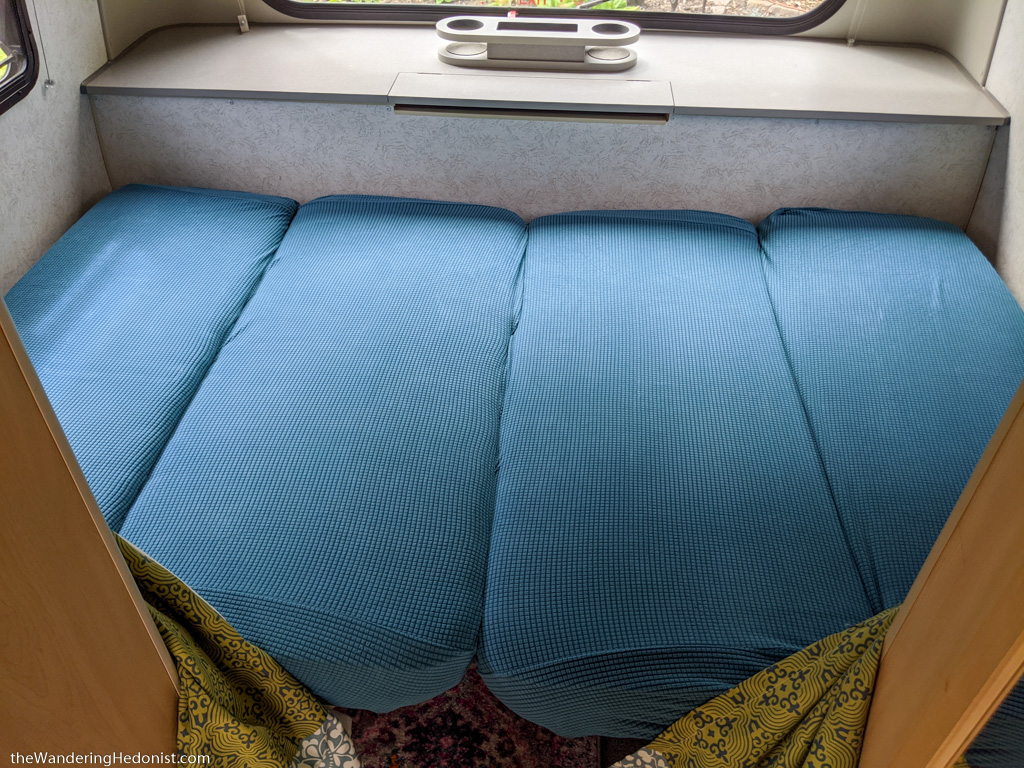
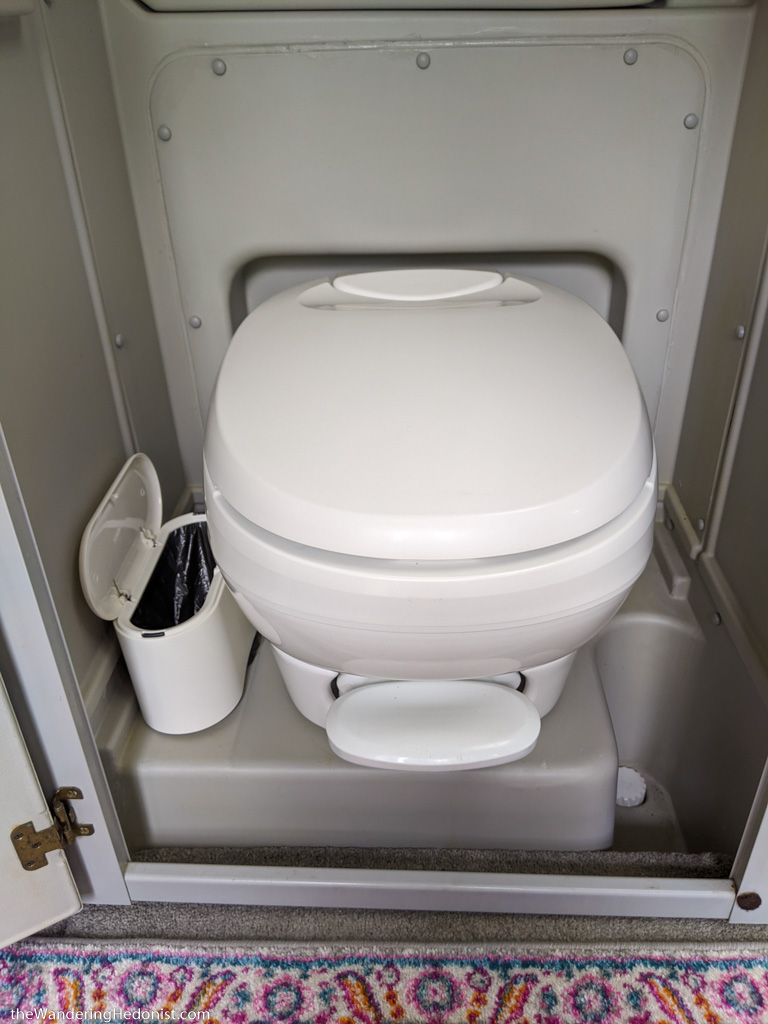
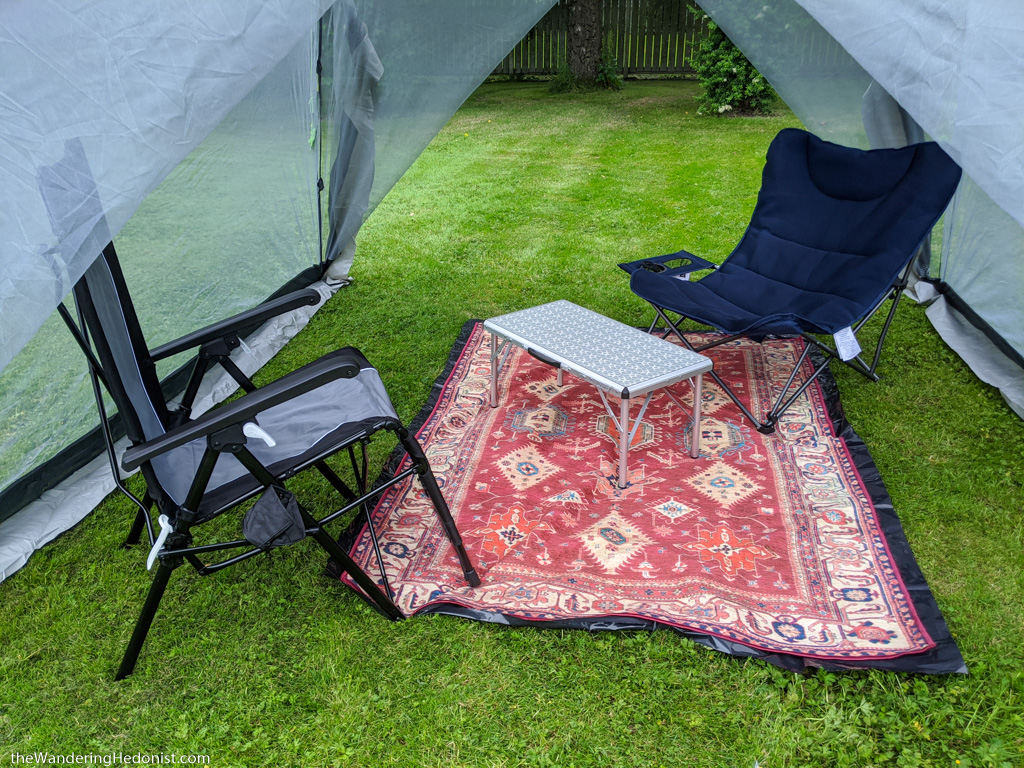
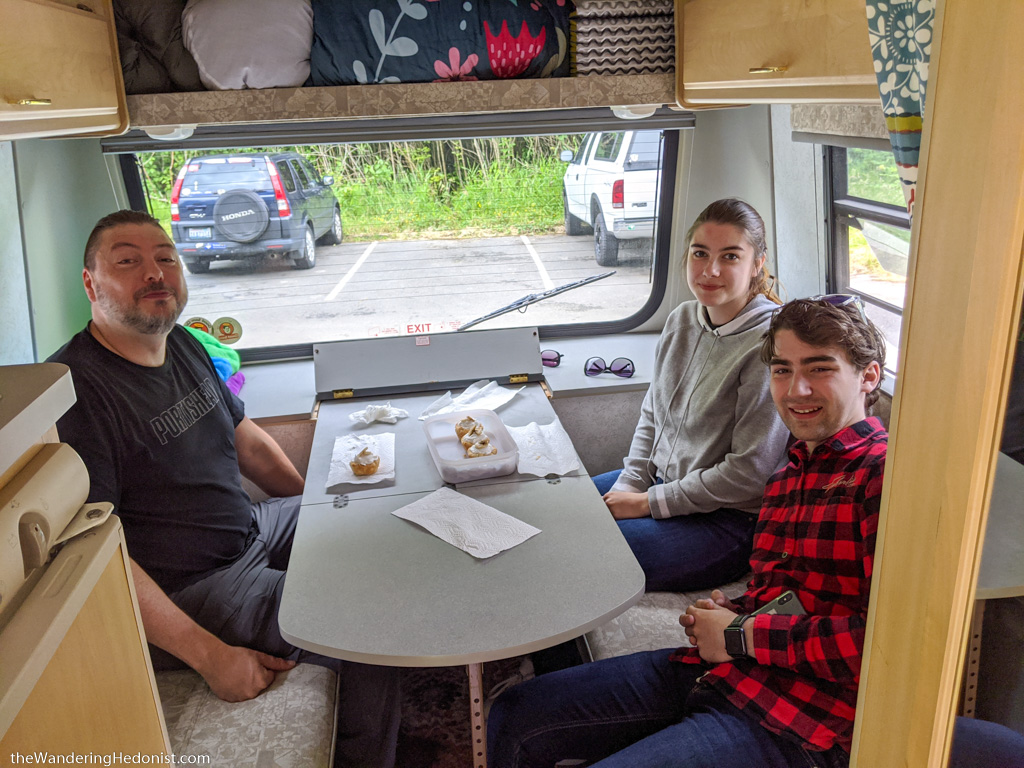
Weighing and adjustments
Rialtas have notoriously low load capacity. You only get about 900lbs of capacity including passenger weight, food and water, LP gas, and everything you put in it. After our body weight that’s only 500lbs before propane, water, or food. We packed the rig up as we wanted and drove to a truckstop to have it weighed. There was some confusion in this process as I had to exit the vehicle to press a button and talk to the attendant inside and she was done before I could get back in the camper. So after we got the weight we added my weight to the total which put us about 105lbs overweight with no food or water. Fuck. We were already packed extremely lightly.
After we got home we made deep cuts to our things. We took off the front seat armrests, removed the heavy third chair, slimmed down the toolkit, removed the drill, tarp, and extension cord. We estimated about 99lbs removed. But that didn’t leave room for food or water.
When we reweighed the next day I made sure to ask to let me get back inside first so it was accurate. But this time we were 235lbs underweight. Which most likely means our original weight included my weight before I exited the vehicle and we added it back unnecessarily. Which was a huge relief.
We decided to leave off the third chair and armrests and some of the other stuff to keep our cushion. This should safely allow us to pack some food and have a few gallons of water for boondocking without going over our gross max weight.
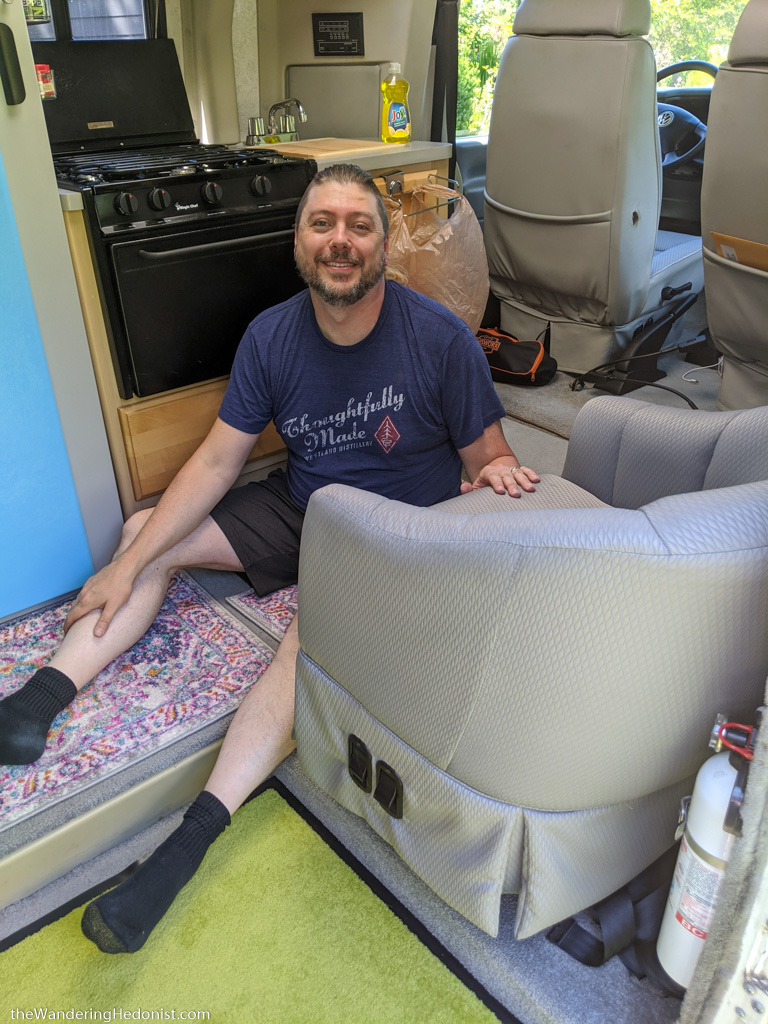
Setting our day of departure
We decided to drive coast to coast along the I90 interstate highway. The northern route is better during the summer and it’s loaded with fun roadside kitsch and National Parks. We want to drive all the way to Boston then head up the coast to Maine. If the Canadian border opens (this isn’t looking too good right now) we want to continue on to Newfoundland and Quebec. Plus stops at family and friends along the way. We’ll see how the closures work out.
We were all ready to leave but our departure coincidentally landed on July 4th weekend right after things opened from a pandemic lockdown. Pretty bad timing from the standpoint of spaces at campgrounds and reservations. So we extended our AirBnB stay through the 6th to miss that madness. We now have standing reservations at Glacier National Park, Yosemite, and Grand Titons National Park. Pretty open after that.
Katy sees this as a new trip with our International trip now over but I consider this leg still a part of our original trip. It had always been a part of that trip, just now we’re going out of order. And I have every intention of going back abroad as soon as I can. So to me, July 6th is Day 281. And I will continue my posts in that format.
I’m still pretty down about having to come home so soon but I’m trying my best to get into the mindset for this new adventure.
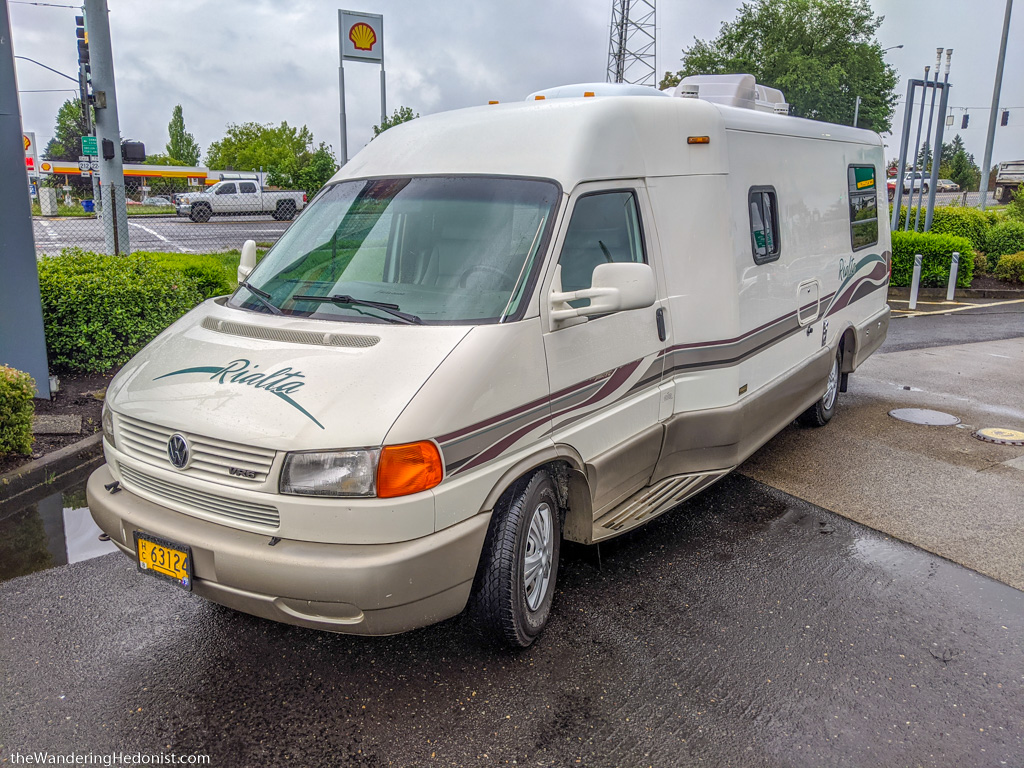
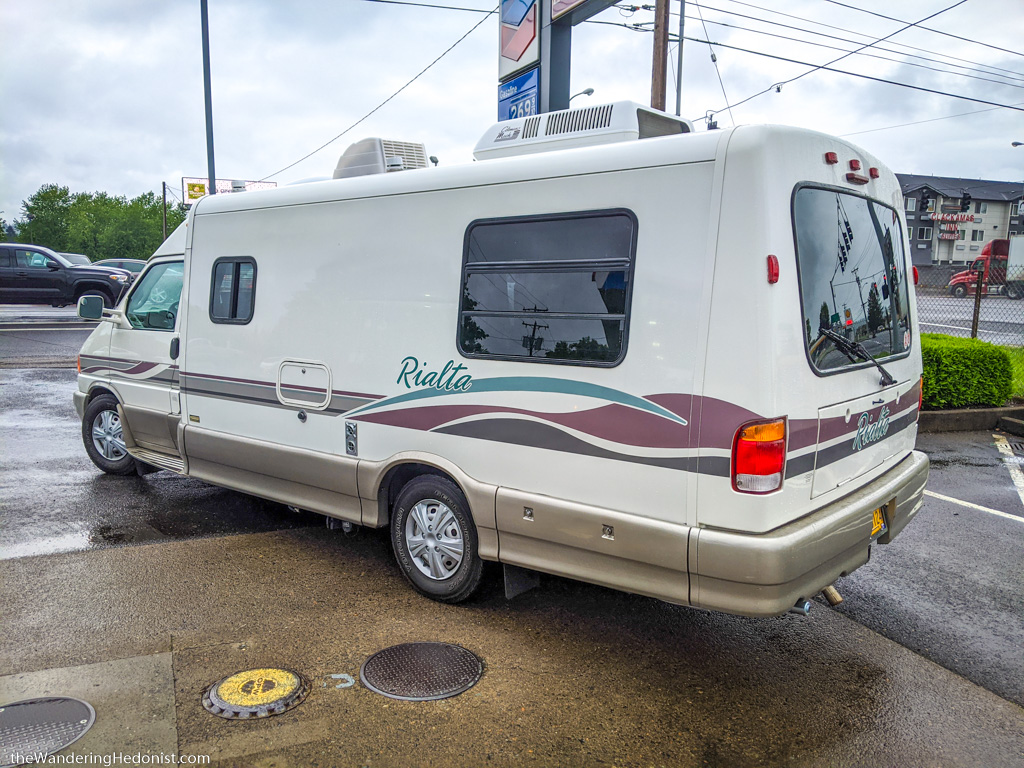
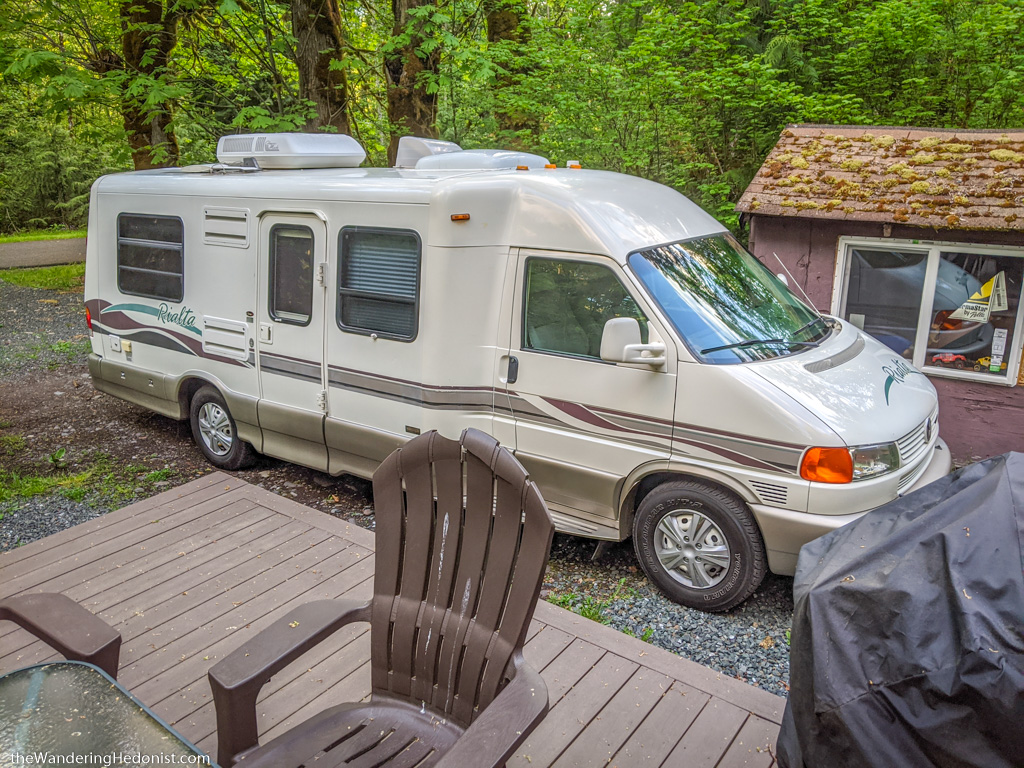
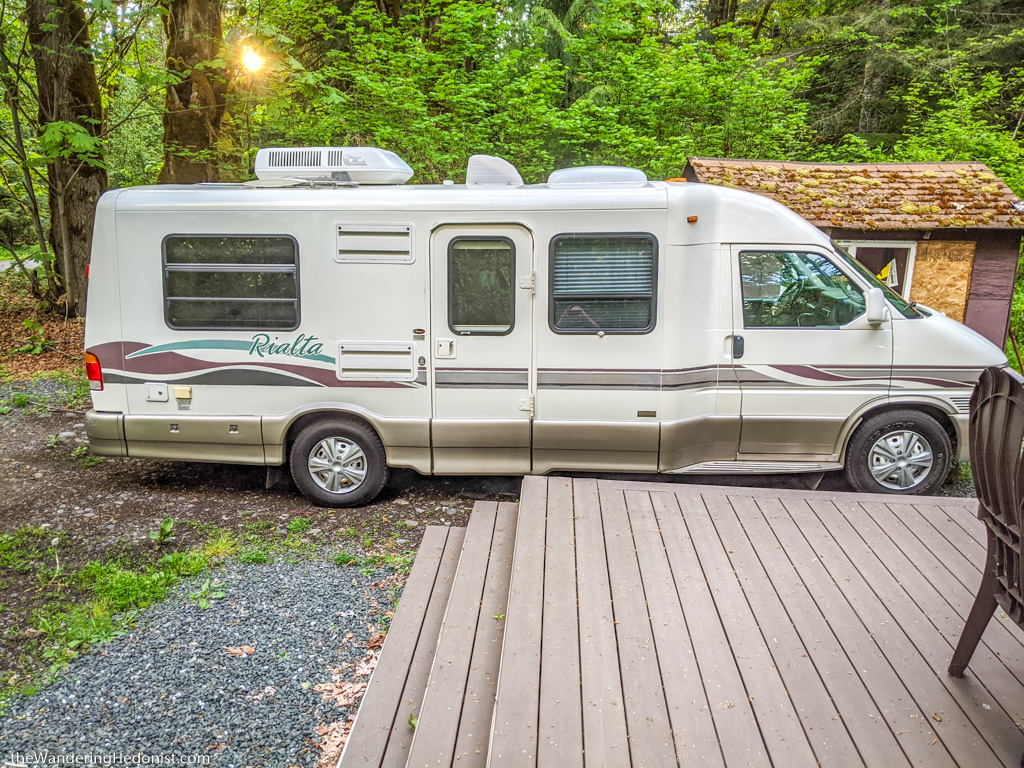
Leave a Reply